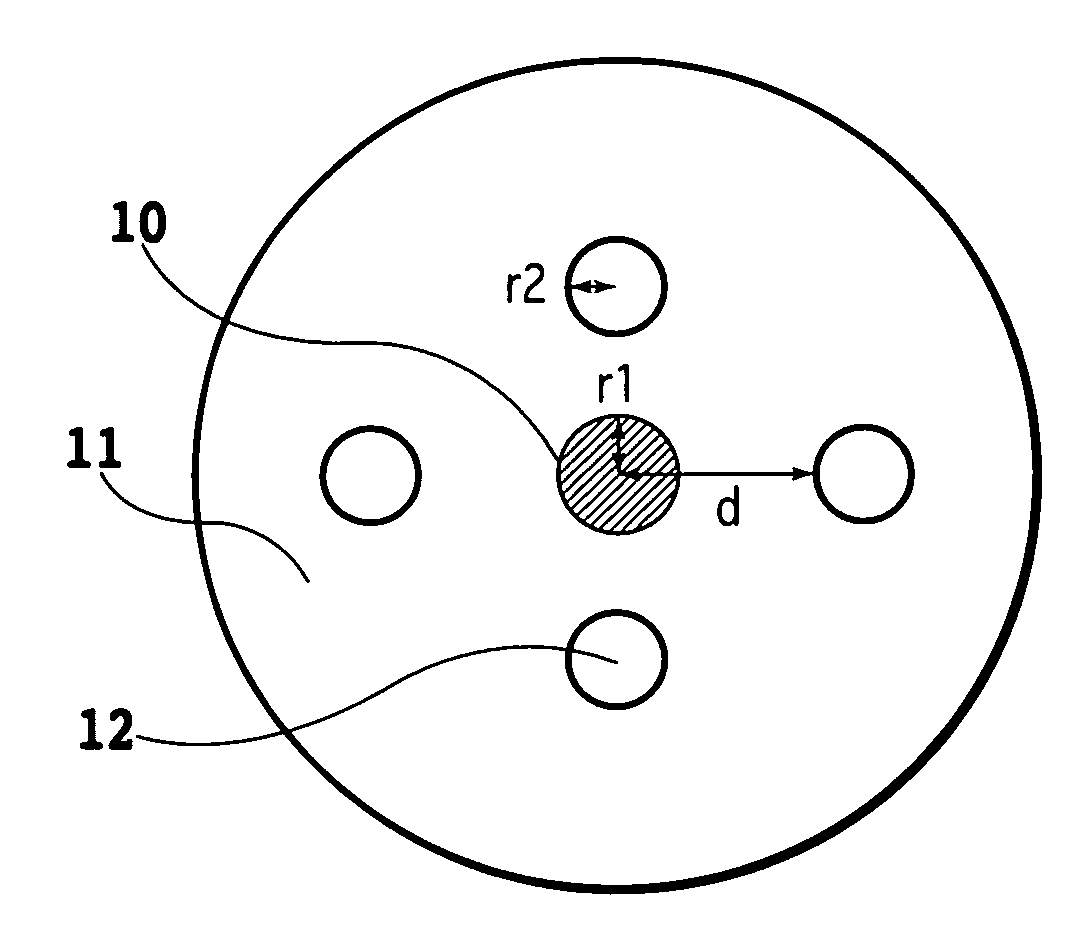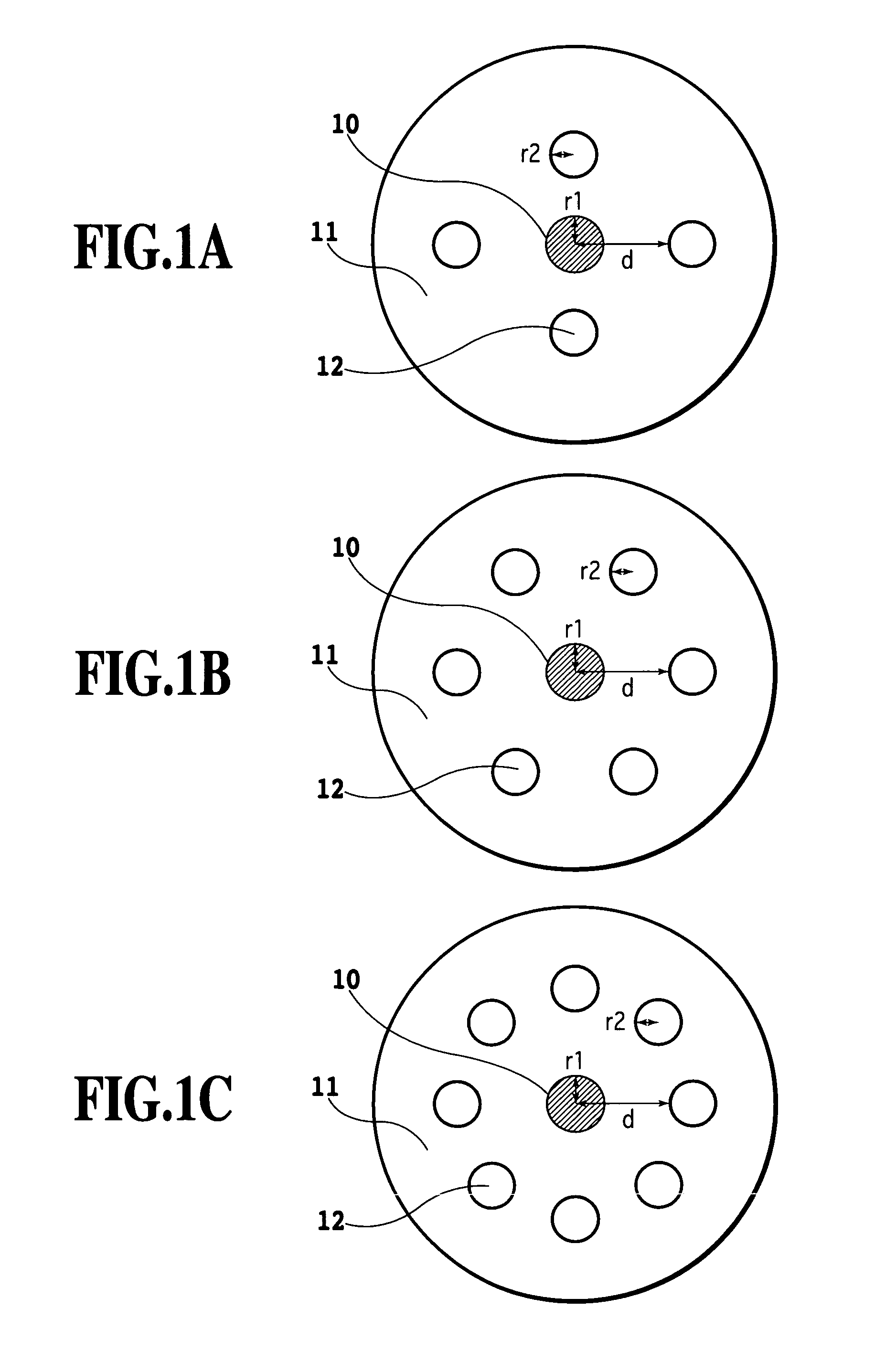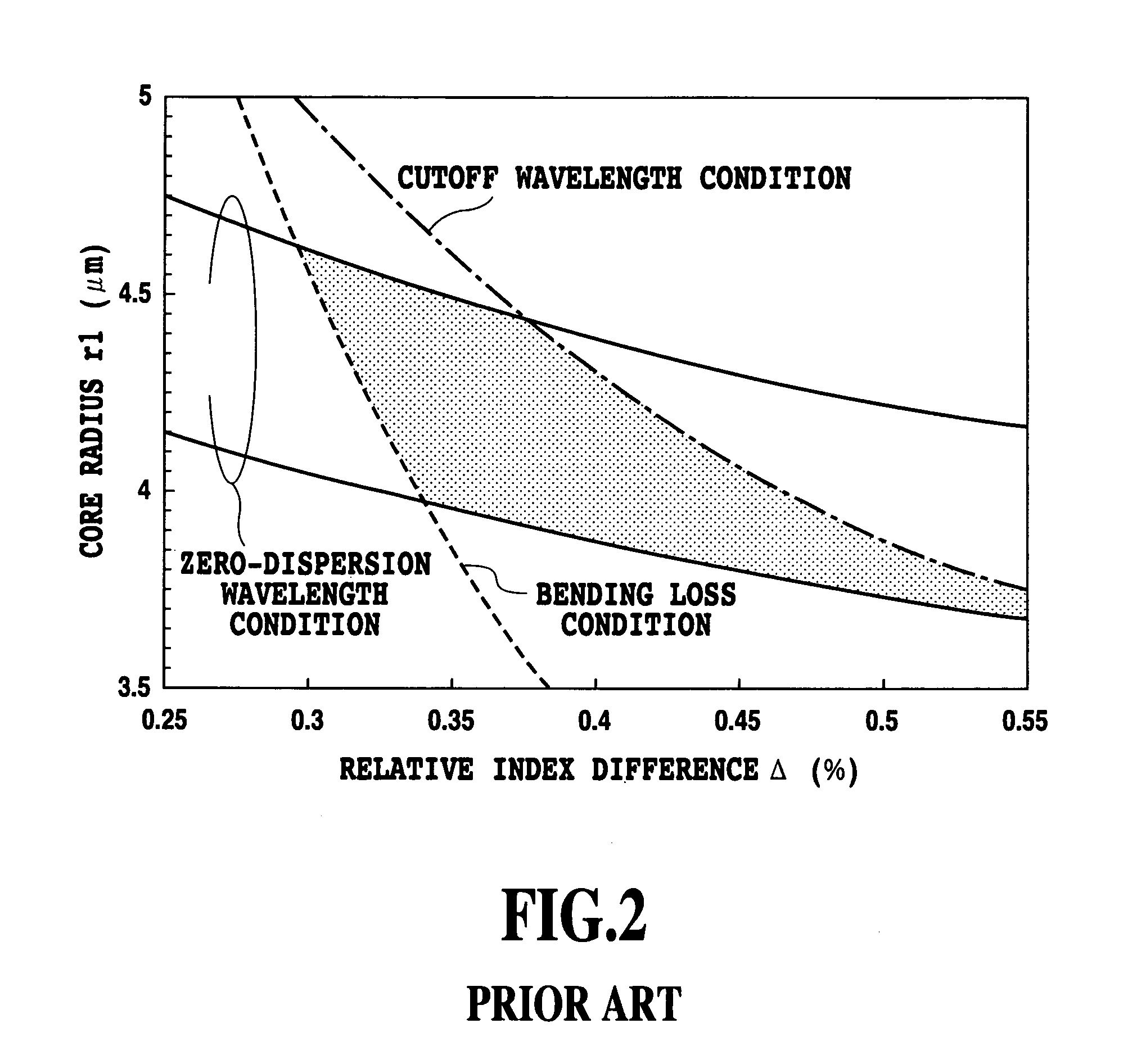Hole-assisted single mode optical fiber
a single-mode optical fiber and optical fiber technology, applied in the field of single-mode optical fibers, can solve the problems of reducing the optical confinement of light propagating through the optical fiber within the optical core, reducing the refractive index profile in the radial direction, and reducing the bending loss resistance of the optical fiber. , to achieve the effect of reducing the cost of manufacturing and high bending loss resistan
- Summary
- Abstract
- Description
- Claims
- Application Information
AI Technical Summary
Benefits of technology
Problems solved by technology
Method used
Image
Examples
first embodiment
[0029]FIGS. 1A–1C are schematic cross-sectional views each showing a cross-sectional structure of an embodiment of a hole-assisted single mode optical fiber in accordance with the present invention: FIG. 1A shows an example with four air holes; FIG. 1B shows an example with six air holes; and FIG. 1C shows an example with eight air holes.
[0030]The single mode fiber in accordance with the present invention comprises a core region 10 with a radius r1, a first cladding region 11 that surrounds the core region and has a uniform refractive index, and a second cladding region including at least four air hole regions 12 that are placed at a distance d from the center of the core region 10 and have a radius r2. It is assumed that the air hole regions 12 are each formed in the longitudinal direction of the optical fiber, and are disposed separately at fixed same interval in a cross section of the optical fiber, and that their diameters are substantially constant in average throughout the lon...
second embodiment
[0045]Next, as the second embodiment in accordance with the present invention, an example will be described in which the effective cross-sectional area Aeff is increased by optimizing the relative index difference Δ of the core region 10 and the core radius.
[0046]FIG. 8 is a diagram illustrating relationships between the relative index difference Δ of the core region 10 from the refractive index of the first cladding region 11 and the effective core radius A, in which the bending loss at the bending radius 10 mm is equal to or less than 1 dB / m. Here, the effective core radius A is defined as the distance from the center of the core region 10 to the extreme circumference of the second cladding region, which is equal to A=d+2×r2 (see, FIGS. 1A–1C). As an example, the number of the air hole regions 12 constituting the second cladding region is six, the air hole radius r2 is 0.3 times the core radius r1, and the air hole distance d is three times the core radius r1.
[0047]FIG. 8 shows th...
PUM
 Login to View More
Login to View More Abstract
Description
Claims
Application Information
 Login to View More
Login to View More - R&D
- Intellectual Property
- Life Sciences
- Materials
- Tech Scout
- Unparalleled Data Quality
- Higher Quality Content
- 60% Fewer Hallucinations
Browse by: Latest US Patents, China's latest patents, Technical Efficacy Thesaurus, Application Domain, Technology Topic, Popular Technical Reports.
© 2025 PatSnap. All rights reserved.Legal|Privacy policy|Modern Slavery Act Transparency Statement|Sitemap|About US| Contact US: help@patsnap.com



